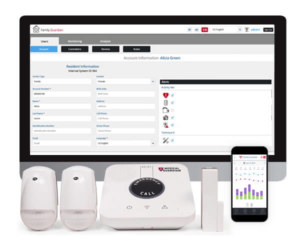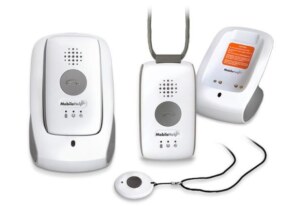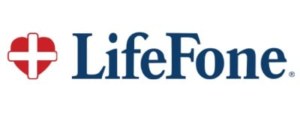Best Medical Alert Systems of 2023
Medical alert systems can provide emergency protection, with some brands offering 24/7 monitoring starting at $19.95/month. You'll find the best medical alerts have quick response times and adapt to your lifestyle.
AgingInPlace.org keeps our resources free by working as an affiliate partner with some companies mentioned on our site. These partnerships or the commission we may earn do not affect our opinions or evaluations of the products we mention. Our reviews are solely based on our research methodology and from input from our AgingInPlace.org Advisory Board. Learn more about our ad policies.
Best Medical Alert Systems of 2023
Products carousel
Growing older doesn’t have to mean giving up your independence. A medical alert system can help increase the likelihood that you are able to age in place at home, so you can feel safe in and outside your home when running errands, taking a walk in the park, or even performing tasks like showering and cooking. Medical alert systems have evolved from the bulky, at-home systems connected to phone landlines to modern and discreet mobile devices that use a cellular network connection. Some medical alert companies even offer smartwatches with an emergency button.
An AARP survey found that 76% of older adults in the U.S. want to age in place. At the same time, 14.7 million (almost 30%) of older adults live alone. Using a medical alert device helps an older adult living independently get the help they need during a medical emergency.
After thorough research and testing, the AgingInPlace.org team rounded up our top choices for the best medical alert system to help you or your loved one age safely in your own home.
Best Medical Alert Systems Ratings of 2023
- Best for an Active Lifestyle: Medical Guardian
- Best At-Home System: MobileHelp
- Best Pricing Options: Bay Alarm Medical
- Best for Customer-Friendly Practices: ADT Health
- Best Mobile System: LifeFone
- Best for Those With Memory Loss: HandsFree Health
- Best for Mobility Challenges: Aloe Care Health
- Best for custom Safety Accessories: Alert1
- Best Service Availability: Medical Alert
- No Wearable Device Required: GetSafe
- Best for Couples or Roommates: One Call Alert
Medical Alert Research Breakdown
The AgingInPlace.org team extensively researched and tested numerous medical alert systems. We selected only the best medical alert companies to help you choose the right system for you or your loved one. Our content is medically reviewed and unbiased to help you choose the right medical alert system for you or your loved one. An AginginPlace.org survey of 1,000 people revealed that more than 94% of medical alert device users or their caregivers were satisfied with their device.
From more than 1,000 hours of research, we chose 11 of the top brands that we believe are the best medical alert systems. We did the following throughout our research process:
- Consulted with geriatricians and adult caregivers
- Mystery shopped the brands
- Surveyed medical alert system users twice
- Tested various medical alert systems
- Interviewed experts in the medical and aging adult fields
- Read hundreds of verified customer reviews from trusted third parties, such as Better Business Bureau (BBB) and Trustpilot
We grade each medical alert company against a 1–10 rating scale and score them according to the following categories:
- Essential features
- Product functionality
- Add-on features
- Customer service
- Purchasing process
Features and criteria within each of these five categories are assigned point values. The more points a brand receives for each criteria, the higher they score in the overall category.
See our full explanation of our research methodology for a breakdown of criteria in each category and our scoring system.
Top Medical Alert Systems
Medical Guardian: Best for an Active Lifestyle

Top Features:
- 1,300-foot range for the at-home landline system and 1,400-foot protection range for the at-home cellular system
- Lightweight mobile devices and smartwatch option
- Free MyGuardian app includes caregiving task reminders, a billing dashboard, and communication features between caregivers
Monthly Plan Cost: $29.95–$39.95 per month
Annual Plan Cost: $27.45–$36.62 per month
Fall Detection: Yes, $10 per month (excluding MGMove Smartwatch)
In-Home Range: 1,300–1,400 feet
Connectivity Options: Landline, Cellular, GPS
Response Time During Our Test: Less than 15 seconds
Editor’s Choice
What Is Editor’s Choice?
Our team of editors and writers choose a product from each article that stands out based on our extensive research of the products we review. While it may not always be the highest-scoring product in the lineup, we’ve chosen the product based on its overall value to our audience.
Why We Chose This Product:
We like that there’s a high-quality option for every type of user. The in-home landline system has the farthest connectivity range of our top medical alert systems, and there are three mobile system options (including a smartwatch). First-time buyers will also appreciate Medical Guardian’s product quiz to help narrow down the right device.
If your calendar is full of on-the-go activities, like walks in the park, shopping, and trying new restaurants with loved ones, then Medical Guardian may be the best fit for you, as it’s easy to wear mobile medical alert systems were named “Best for an Active Lifestyle” by our team. The brand as a whole received a 9.57 out of 10 in our scoring due to stand-out features like the monitoring center’s fast response time, a resourceful caregiver app, and add-on safety accessories like voice-activated wall buttons.
Mobile 2.0, Mini Guardian, or the MGMove Smartwatch fall under Medical Guardian’s mobile systems. Both the Mobile 2.0 and Mini Guardian are small (a little over 2.5 inches tall), lightweight (lighter than two AA batteries), and water-resistant. You can easily hide either system by tucking it under your shirt collar or clipping it to your clothes or purse. Both support fall detection and will work up to five days before needing to be recharged. The MGMove Smartwatch helps keep you moving with a step counter and activity tracker, but fall detection isn’t available.
If you’re more comfortable spending your time at home, Medical Guardian’s at-home systems offer up to 1,400 feet of coverage (Home 2.0) from the base station. The Classic Guardian landline system offers 1,300 feet of protection. You can also add more wall buttons or wearable buttons to either at-home system.
Health features, such as movement and vitals monitoring, are not offered by Medical Guardian. So, the brand may not offer a system suitable for you or your loved one if health monitoring is a priority.
Medical Guardian’s $29.95 monthly price for its standard landline system is higher than competitor pricing, which ranges $19.95–$24.95 per month. It does, however, have the longest range of any landline system we reviewed.
Top Features:
- 1,400-foot protection range with at-home cellular system
- Offers three at-home options and more advanced at-home devices, like the digital tablet Touch Classic
- Connect virtually with a board-certified doctor with MDLIVE telehealth for an additional monthly fee
Monthly Plan Cost: $19.95–$54.95 per month
Annual Plan Cost: $22.95–$49.95 per month
Fall Detection: Yes, $11 per month (excluding Wired Home)
In-Home Range: 600–1,400 feet
Connectivity Options: Landline, Cellular, GPS
Response Time During Our Test: Less than 15 seconds
MobileHelp, rated a 9.05 out of 10 by our team, has three at-home options. Most competitors offer two at-home devices. This is one of the reasons why our team named Mobile Help “Best At-Home System.” The Classic at-home cellular system has a 1,400-foot coverage range around your home, yard, or even further. The Wired Home is the at-home landline system, with 600 feet of coverage from the base station, making this a good option if you or your loved one have poor cellular service or live in an apartment, condo, or assisted living facility.
Most at-home medical alert systems have a standard help button and two-way speaker, saving special features and smart technology for mobile systems, but not MobileHelp. The Touch Classic is a touchscreen tablet that doubles as an at-home base station. It includes interactive brain games, a digital photo gallery, and optional medication reminders, and it has a 1,400-foot coverage range from the base station. When we ordered this system for testing, the $99.95 equipment fee was waived. This will not be the case for every transaction, and we couldn’t get a clear answer from a sales representative why the fee was waived.
Both mobile systems—the Solo and Micro—connect to the monitoring center via AT&T cell service, and have two-way speakers and GPS tracking. The Solo is slightly larger than the Micro, but it will still fit in your pocket or purse and can double as your at-home base station. We recommend one of MobileHelp’s bundle deals (two systems for the price of one) if you’re looking for protection for two people in the same home.
Top Features
- Mobile system’s monthly fee is lower than most competitors ($29.95 per month)
- Free GPS monitoring services with mobile and smartwatch subscriptions
- Can add at-home monitoring for your partner or roommate by purchasing an additional help button—no additional subscription required
Monthly Plan Cost: $24.95–$49.95 per month
Annual Plan Cost: $24.95–$49.95 per month
Fall Detection: Yes, $10 per month (not available with the SOS Smartwatch)
In-Home Range: 1,000 feet
Connectivity Options: Landline, Cellular, GPS
Response Time During Our Test: Less than 15 seconds
Bay Alarm Medical scored a 9.62 out of 10—the highest on our list—in our testing of medical alert systems. The system was easy to install and the customer service representative we spoke with was personable and helpful. We were also impressed with the monitoring center’s response time, as well as the company´s positive reputation and overall customer satisfaction. The brand has an A+ Better Business Bureau rating and a customer review score of 4.24 out of 5 stars.
Ultimately, the brand’s affordable monthly prices led our team to name Bay Alarm Medical “Best Pricing Options.”
The at-home systems fall within about the same price range as competitors, but the mobile systems are a great deal if you’re watching your wallet. While the average monthly cost of an on-the-go system is $37–$40, Bay Alarm Medical’s SOS Mobile is $29.95—that saves you about $7–$10 each month, or $100 per year.
The SOS Mobile and SOS Smartwatch offer premium features at an affordable price—the one-time equipment fee ($99 for SOS Mobile and $159 for SOS Smartwatch) is low compared to similar systems from other brands. Both include 4G LTE connection to a 24/7 monitoring center, GPS tracking, and two-way speakers.
ADT Health: Best for Customer-Friendly Practices

Top Features:
- At-home systems include home temperature monitoring
- Free 2-day shipping available
- Discounts usually available for current ADT customers
Monthly Plan Cost: $29.99–$39.99 per month
Fall Detection: Yes, $11 per month (excluding the Medical Alert Basic)
In-Home Range: 300–600 feet
Connectivity Options: Landline, Cellular, GPS
Response Time During Our Test: Less than 15 seconds
ADT Health fell right in the middle of our top 11 medical alert system ratings with an overall score of 8.71 out of 10. While the rating is lower than brands mentioned above, ADT Health is our preferred choice if customer service is at the top of your list. Our team voted the brand “Best for Customer-Friendly Practices.”
ADT Health’s sales team is available to receive calls 24/7. There’s also a helpful online chat for quick questions about products or your existing ADT account. We experienced excellent customer service both on the phone and when using the online chat. The sales representatives were courteous and offered transparent information without trying to push a sale.
The medical alert systems are pretty standard without many standout features, but the company´s customer policies are some of the best. You’ll be able to cancel your service any time and are only charged for the months of service used. If you cancel your subscription before your payment period ends, you’ll receive a prorated check with your remaining balance.
The company has also been running an ongoing promotion that includes free 2-day shipping, and free activation.
ADT Health home systems have a phone landline (Medical Alert Basic) or cellular network (Medical Alert Plus) connection. Both systems come with home temperature monitoring and a wearable pendant. On-the-Go is the only mobile system and has standard features like GPS tracking and optional fall detection. You can also add two waterproof wall buttons for free if you order the Medical Alert Plus or On-the-Go.
Top Features:
- Mobile devices have long battery life: VIPx (16 days) and VIP Active (5 days)
- At 1.3 ounces, the VIPx and VIP Active are two of the lightest mobile devices of the systems we reviewed (only slightly heavier than a pencil)
- Fall detection is $5 per month for mobile systems, compared to most competitors’ $10 per month
Monthly Plan Cost: $29.95–$45.95 per month
Annual Plan Cost: $24.95–$41.95 per month
Fall Detection: Yes, $5–$10 per month depending on the system
In-Home Range: 600–1,400 feet
Connectivity Options: Landline, Cellular, GPS
Response Time During Our Test: 15–25 seconds
LifeFone, rated 8.77 out of 10 by our team and named “Best Mobile System,” has you covered anywhere you go with multiple mobile systems to choose from. The VIPx and VIP Active are mobile devices that can double as at-home systems. The VIP Active is LifeFone’s newest mobile system. It’s lighter and smaller than the original VIP system, but the five-day battery life is significantly less than the VIP’s 30-day battery life. While a sales representative confirmed with us on the phone that the original VIP is still available to purchase, a live chat representative informed us that LifeFone is phasing out this older model.
The VIPx and VIP Active each have impressive multi-day battery life. When your battery is at 20%–30%, a LifeFone representative will send you an email and text message reminding you that it needs to be recharged, so you’ll always be fully covered. Optional fall detection is only $5 per month with the two mobile systems compared to $10 per month with LifeFone’s at-home packages—saving you $5 a month and $60 each year.
The At-Home & On-the-Go bundle includes a base station (1,400-foot range) and mobile device (600-foot range if used as a home base station).
The At-Home Landline and Cellular base stations have a two-way speaker, home temperature monitoring, and a 1,300-foot range. Both the landline and cellular systems include a water-resistant help button with optional fall detection.
LifeFone’s at-home systems and VIP Active use AT&T cell service to connect to the monitoring station, but you get to choose either AT&T or Verizon when ordering the VIPx.
Top Features:
- Voice-activated smart speaker with an extensive health database that doubles as a medical alert system
- Smartwatch option available
- HandsFree app helps users find doctors, manage prescriptions, and get answers to health insurance questions
Monthly Plan Cost: $29.95–$54.95 per month
Annual Plan Cost: Not offered
Fall Detection: Yes, $10 per month (excluding the WellBe Smart Speaker and WellBe Medical Alert Watch)
In-Home Range: N/A
Connectivity Options: Cellular, GPS
Response Time During Our Test: Less than 15 seconds
HandsFree Health’s WellBe Smart Speaker can be an excellent tool for users with memory loss or those who are in the early stages of dementia, as you or your loved one don’t need to remember to pick up, locate, or wear the device to use it. You just need to know the phrase, “Ok WellBe” to activate the smart speaker. Caregivers can set medication reminders, doctor appointment reminders, or even reminders for basic chores like watering the plants. The smart speaker will light up for a scheduled reminder. You or your loved one will ask, “Ok WellBe, what is my reminder?”, then will be told the specific reminder, such as, “It’s time to water your plants.”
The HandsFree Health WellBe speaker has a full medical database, so you and your loved one can ask general health and medical insurance questions or call for help during an emergency. You must purchase the Medical Alert PLUS bundle to get 24/7 monitoring with your speaker, which includes a WellBe Smart Speaker and Smartwatch. The touchscreen watch is also voice-activated, so you or your loved one can connect to the monitoring center during an emergency or ask healthcare questions using only your voice.
The WellBe Pendant is available if you’d like a more traditional on-the-go device with optional fall detection, but you can’t bundle it with the smart speaker or watch. Both the pendant and smartwatch have GPS monitoring, allowing caregivers to check in on their loved one’s location at all times. The monitoring center agent will also be able to see their location if they call for help. This can be a huge reassurance if your loved one has wandered in the past.
There’s also an app for caregivers to set up reminders and receive notifications if you press the help button or miss a dose of medication or doctor appointment. Your loved one can receive reminders on their smartwatch and smart speaker. These repetitive reminders generally work best for those in the earlier stages of dementia, according to Christopher Norman, a Geriatric Nurse Practitioner in New York State. Someone with dementia may forget to act on the reminder, even after just hearing it.
While we were impressed with the smartspeaker features, our team rated HandsFree Health 7.99 out of 10. The system was difficult to setup, the monthly monitoring fees are expensive, and the only way to get in touch with customer service is by sending a message—there’s no phone number available on the website.
Aloe Care Health: Best for Mobility Challenges
Top Features:
- The base station (the Hub) has built in motion, home temperature, and air quality sensors
- The Aloe Care app is included with all subscriptions. Caregivers receive updates during an emergency and call the base station, all by using the app.
- Free fall detection is included with the Mobile Companion Go (but fall detection isn’t available with other devices)
Monthly Plan Cost: $29.99–$49.99 per month
Annual Plan Cost: Not offered
Fall Detection: Yes, free (excluding Essentials plan)
In-Home Range: 200 feet
Connectivity Options: Cellular, GPS
Response Time During Our Test: Less than 15 seconds
Simplify your protection and care plan with Aloe Care Health’s Smart Hub. The smart base station—the Hub—has a motion sensor, two-way speakers, voice-activated emergency response and a collaborative caregiver app. This close monitoring, hands-free technology is why we voted Aloe Health Care “Best for Mobility Challenges.”
Caregivers and loved ones can receive real-time updates about your safety and overall care with the free Aloe Care Health app. They may also set up alerts for your movement pattern changes and call for help through the app if your movements stop or become abnormal. Your caregiver circle will receive real-time updates through the app from medical responders during an emergency.
The Smart Hub acts as your base station and can be used for two-way, hands-free calls. The Hub monitors air temperature and quality, helping to keep you safe from an emergency before you even know it’s happening. This unique safety feature is important for older adults living alone, especially those in cold climates. Their home temperature may become dangerously low if their heater is broken and they don’t realize it, or if they’re trying to lower their heating bill to keep costs down. If the Hub senses a dangerously low (or too warm) temperature, the monitoring center will automatically be contacted.
The Hub’s air quality sensors also detect carbon dioxide (CO2) and volatile organic compound (VOC) levels and will contact the monitoring center if either reach a dangerous level.
The Mobile Companion Go automatically includes fall detection and is the only on-the-go device available. It is Aloe Care Health’s newest mobile device, replacing the Mobile Companion. We confirmed with a customer service representative that the Mobile Companion Go is smaller and lighter than the previous model. You can purchase it on its own or as part of the Essentials Plus or Total Care Package. The Mobile Companion Go uses lights, sound, and vibration feedback to make sure you receive messages.
Our team rated Aloe Health Care a 7.64 out of 10, however, the device earned our top scores for an affordable starting monthly price, the monitoring center’s fast response time, and its hands-on caregiver app that lets caregivers communicate with one another.
Top Features:
- Has an extensive list of safety accessories available as add-ons, like a smoke detector, medical ID bracelet, surge guard and more, ranging in price from $9.95–$200
- 190 languages available with multilingual monitoring center operators
- Smartwatch available with GPS monitoring, step tracker, and weather app
Monthly Plan Cost: $28.95–$58.95 per month
Annual Plan Cost (pre-paid): $19.95–$49.95 per month
Fall Detection: Yes, $10 per month (excluding On-the-Go Wrist Watch)
In-Home Range: 600 feet
Connectivity Options: Landline, Cellular, GPS
Response Time During Our Test: Less than 15 seconds
Alert1 offers several safety accessories to your order, like a smoke detector, medication reminder and organizer, medical ID bracelet, surge guard, wall-mounted buttons, voice extender for the base station and more. This is why our team voted Alert1 “Best for Custom Safety Accessories” and gave it a scored of 8.95 out of 10.
Fall detection and GPS tracking are available with select Alert1 devices, but the company doesn’t offer activity tracking or health monitoring for caregivers. There isn’t an app or online portal to coordinate your loved one’s care. The only caregiver-focused feature is the “Circle of Care.” This is a list of close contacts who will be contacted by the monitoring center when you have an emergency.
Alert1 medical alert systems are straightforward, reliable, and easy to set up. We think it’s a good choice for caregivers and users looking for a simple system that offers 24/7 protection.
The brand sells three standard medical alert systems to choose from: in-home, mobile, and smartwatch. The in-home system connects to the monitoring center via a landline (In-Home Classic) or AT&T cell service (In-Home Wireless). Both systems have 600 feet of coverage from the base station. You can choose coverage from either AT&T or Verizon for two systems: The On-the-Go with Fall Detection and the In-Home with Fall Detection and On-the-Go bundle.
We like Alert1’s unique payment structure: You can prepay for your first 10 months of service and receive the eleventh month for free.
If you don’t have to coordinate care among multiple family and friends and want a standard medical alert system, Alert1 may be a good fit.
Top Features:
- The at-home system works in the U.S., Puerto Rico, the Virgin Islands and Canada
- Free app included with all subscriptions
- A+ rating from the Better Business Bureau
Monthly Plan Cost: $27.95–$47.95 per month
Annual Plan Cost: $19.95–$39.95 per month
Fall Detection: Yes, $10 per month
In-Home Range: 800 feet
Connectivity Options: Landline, Cellular, GPS
Response Time During Our Test: 15–25 seconds
Medical Alert received an 8.64 out of 10 from our team and was voted “Best Service Ability.” The at-home system is the only device on our list with service available in multiple U.S. territories and Canada; most medical alert systems only offer service within the 50 states. While you can’t travel between these service areas and use the same system, Medical Alert is an excellent option if you live in Puerto Rico, the Virgin Islands, or Canada.
The company’s monitoring center services are also available in 140 languages. This is your opportunity to get high-quality equipment and accessible coverage for one of the lowest-priced at-home and mobile medical alert systems.
We like that Medical Alert’s Home Landline System and Home Cellular System both have an 800-foot range from the base station and optional fall detection. Most at-home systems either have a shorter range or don’t include add-on options like fall detection.
The Mobile System has all the features of a standard on-the-go device: two-way speaker, GPS tracking, and optional fall detection. It’s worn around your neck and weighs two ounces—only about the weight of two pens.
Top Features:
- Doesn’t require you to wear a button
- Three available packages designed to fit different home sizes (0–1 bedroom, 2–3 bedrooms, and 4–5 bedrooms), and you can also customize your package
- Can bundle fall detection and GPS tracking services for $10 per month
Monthly Plan Cost: $27.95 per month
Annual Plan Cost: Not offered
Fall Detection: Yes, $10 per month
In-Home Range: 1,300 feet
Connectivity Options: Landline, Cellular, GPS
Response Time During Our Test: 25–35 seconds
GetSafe offers you or your loved one full at-home coverage without having to wear a button. That’s why our team voted the GetSafe device “Best for No Wearable Device Needed.” We think this option is great if you or your loved one are reluctant to wear a medical alert device or if you may forget to wear one at all times.
GetSafe’s main draw is that it is a non-wearable, at-home medical alert system, but we like that each package includes a complimentary lanyard with a traditional help button. The lanyard is waterproof and has a five-year battery life.
The system is designed to be flexible and integrate with your home. Each wall button includes three alert options: voice-activated, a button, or a cord. You’ll say, “Call 9-1-1” twice to contact the monitoring center. We confirmed with a sales representative that the voice activation will generally work within the same room or an adjacent room.
GetSafe recommends adding fall detection to your package if you’re worried you or your loved one are at risk of a serious fall that could cause disorientation or unconsciousness. Wall buttons don’t detect motion or falls, so the fall detection lanyard is a crucial safety net and works up to 800 feet from the base station. We hope the brand will release motion-sensor wall buttons in the future so devices are truly non-wearable.
The packages are designed for complete home coverage, but you can purchase additional wall buttons to place anywhere in your home for even greater coverage. You can choose from three packages—Starter, Standard, and Select. These correspond to the size of your home.
GetSafe received a score of 8.17 out of 10 from our team. The equipment was difficult to setup, and it took us over 25 seconds to connect with a monitoring center agent. All at-home packages have the same monthly monitoring fee, but the equipment fee increases with each package, which we didn’t like.
GetSafe may not be ideal if you or your loved one live in a larger home, as the equipment fee costs at least $200 more to cover a four- to five-bedroom home compared to the company´s Starter package.
One Call Alert: Best for Couples or Roommates

Top Features:
- 1,400-foot protection range for the at-home cellular system
- Mobile Double is one of the only bundle subscription designed for multiple users
- Medication reminders and GPS tracking are available special features
Monthly Plan Cost: $24.95–$44.95 per month
Annual Plan Cost: $22.95–$39.95 per month
Fall Detection: Yes, $10 per month (excluding the In-Home Landline)
In-Home Range: 600–1,400 feet
Connectivity Options: Landline, Cellular, GPS
Response Time During Our Test: 25–35 seconds
If you’re not the only one in your home using a medical alert system, consider One Call Alert. Our team voted One Call Alert “Best for Couples or Roommates” because it offers multiple bundle packages that can monitor two people for one monthly monitoring fee.
Mobile Double system includes two mobile systems for a $44.95 monthly monitoring fee. You and your spouse, partner, or roommate can use the mobile base stations in and outside your home for 24/7 protection. The Complete Protection bundle includes an at-home base station and mobile device for a $41.95 monthly monitoring fee. You can stay connected to the monitoring center from the at-home base station while your partner or roommate uses the mobile system.
If you’re looking for a less bulky mobile system, the All-in-One is One Call Alert’s newer, smaller, and more discreet device. It has all the same features as the classic mobile system: GPS tracking, two-way speakers, and optional fall detection, and it’s water-resistant. The two at-home systems have a huge difference in the protection range from the base station. The In-Home Wireless (1,400-foot range) is more than double the range of the In-Home Landline (600 feet).
One Call Alert had slower response times compared to other systems we tested, which is one of the reasons why it earned a 7.53 out of 10 from our team. It took us more than 25 seconds to reach a monitoring center agent during our test. We also had a difficult time getting in touch with a customer service representative.
What Is a Medical Alert System?
Medical alert systems are devices that help protect older adults or people with limited mobility when they are in or outside their homes. In case of an emergency, such as a fall, burn, or accidental overdose, the systems connect the user to a 24/7 monitoring center via a button, pull string, voice command or wearable device.
These systems can allow you to continue living your best life in your home and give your loved ones peace of mind knowing you’re always one call away from receiving help.
Many models now offer features beyond basic monitoring, like fall detection, GPS location monitoring, medication and appointment reminders, and even motion sensors to monitor your loved one’s activity level for all-around safety promotion and care.
How Do Medical Alert Systems Work?
Medical alert systems are connected to a 24/7 emergency monitoring center. Users can contact the monitoring center with the push of a button, their voice, or if the sensors detect a fall. When a monitoring center agent is contacted, they’ll dispatch emergency services—or a loved one—to the user’s home, depending on the severity of the situation or the person’s saved device settings. Most companies offer at-home and mobile systems.
At-home medical alert systems protect you or your loved one primarily inside the home or around the yard. The at-home base station connects to a monitoring center via landline or cellular service and may offer coverage ranging from 200 feet (Aloe Care Health) to 1,400 feet (Medical Guardian and LifeFone, among others) from the base station.
Mobile medical alert systems protect you or your loved one either at home or on the go with a wearable device that connects to the monitoring center via cellular service. Mobile medical alert systems are typically available in button, pendant, or even smartwatch styles and offer protection anywhere outside of the home.
Most medical alert systems are easy to set up and don’t need to be professionally installed. Many companies refer to this easy installation as “plug and play.” You’re able to plug in, test, and use your system right away. Many companies offer video tutorials and step-by-step instructions to help you set up and test your system yourself. If your device includes fall detection, most systems will include specific instructions for testing this feature.
More than half (56%) of respondents in a survey conducted by AgingInPlace.org feel more confident performing daily activities knowing their medical alert system will provide immediate assistance.
Types of Medical Alert Systems
Your medical alert system package will include at least two or more pieces of equipment. Let’s break down the most common ones.
In-Home
The at-home base unit is the main equipment of at-home medical alert systems. It’s also called a base station. The base unit connects to the monitoring center via landline or cellular network. Most at-home base units have an emergency button and two-way speakers. At-home systems also include a help button.
The help button connects to the at-home base unit and can be worn as a pendant or bracelet. When you wear your help button, you’re connected to your base unit as long as you stay within its connection range.
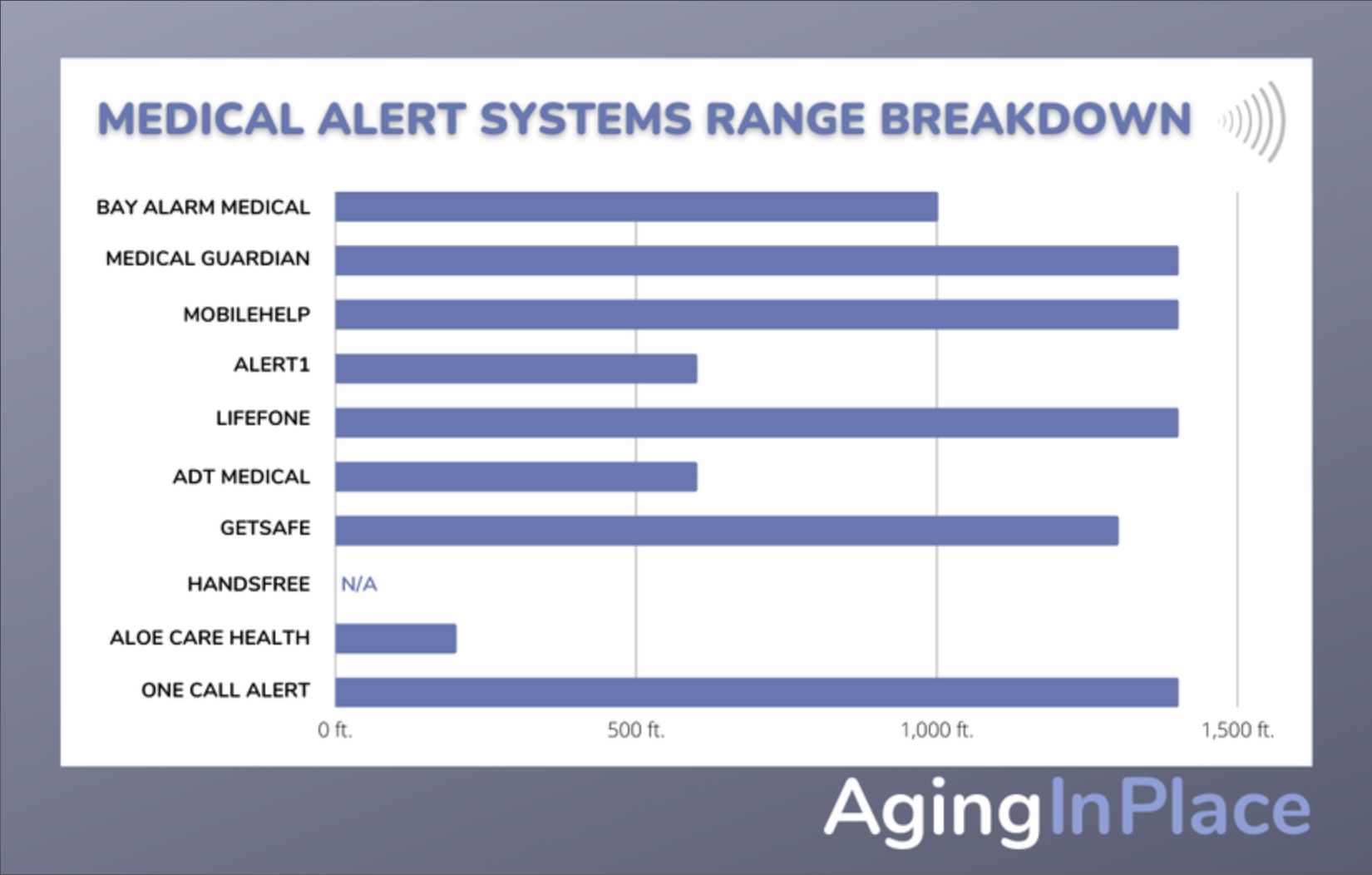
During an emergency, you’ll press the button on your pendant or bracelet. If slippery areas like your shower or the garage are worrisome for you, wearable, water-resistant pendants can provide added confidence knowing that you can connect to help if an emergent event takes place. Many at-home pendants include optional fall detection for an additional fee.“Before pursuing the fall detection feature, have a good understanding about the types of falls most likely to be detected with the device,” said Christopher Norman, Geriatric Nurse Practitioner, Gerontologist, and Advanced Practice Holistic Nurse at PACE CNY. “A sudden drop from a standing position, such as tripping over something, may register the fall differently than a lower velocity fall like falling from a chair. Both scenarios may result in a situation where a person may not be able to independently get up from the floor.”
Mobile
A mobile medical alert system can be used both in and outside of your home by connecting to the monitoring center via cellular service. These systems are small (about the size of a pager), lightweight, and are designed to be worn around your neck or clipped to clothing. Many are water-resistant and have a multiple-day battery life—perfect if you enjoy a more on-the-go lifestyle.
You can reach the monitoring center with the push of a button or if fall detection is activated. Most mobile systems include GPS tracking and a two-way speaker enabling the use to speak with a monitoring center agent during an emergency.
When the mobile device is charging on your mobile base station, it can also function as an at-home medical alert system.
Wearable Medical Alert Systems
Watches are the newest wearable medical alert technology. These smartwatches don’t need to be Bluetooth connected to a smartphone and are simple to operate. This option is even more discreet than a standard mobile medical alert system since it also functions as a watch.
Medical alert smartwatches feature a help button and two-way speaker in case of an emergency. Many watches also include a pedometer, heart rate monitor, and GPS capabilities. Fall detection isn’t typically available with smartwatches because common arm movements are more likely to be falsely registered as a fall.
Bay Alarm Medical, Medical Guardian, Alert1, and HandsFree Health offer smartwatch options.
Features of Medical Alert Systems
| Brand | Fall Detection | GPS Tracking | Caregiver App / Online Portal | Medication Reminders | Wall Buttons |
|---|---|---|---|---|---|
| Medical Guardian | MGMove only | ||||
| MobileHelp | |||||
| Bay Alarm Medical | |||||
| ADT Health | |||||
| LifeFone | VIPx only | ||||
| Aloe Care Health | |||||
| HandsFree Health | |||||
| Alert1 | |||||
| Medical Alert | |||||
| GetSafe | |||||
| One Call Alert |
| Brand | ||||||||||||||||||||||||||||||||||||||||||||||||||||||||||||||||||||||||||||||||||||||||||||||||||||||||||||||||||||||||||||||||||||||||||||||||||||||||||||||||||||||||||||||||||||||||||||||||||||||||||||||||||||||||||||||||||||||||||||||||||||||||||||||||||||||||||||||||||||||||||||||||||||||||||||||||||||||||||||||||||||||||||||||||||||||||||||||||||||||||||||||||||||||||||||||||||||||||||||||||||||||||||||||||||||||||||||||||||||||||||||||||||||||||||||||||||||||||||||||||||||||||||||||||||||||||||||||||||||||||||||||||||||||||||||||||||||||||||||||||||||||||||||||||||||||||||||||||||||||||||||||||||||||||||||||||||||||||||||||||||||||
| Medical Guardian | Fall Detection | GPS Tracking | Caregiver App / Online Portal | Medication Reminders | MGMove only | Wall Buttons |
|---|
| MobileHelp | Fall Detection | GPS Tracking | Caregiver App / Online Portal | Medication Reminders | Wall Buttons |
|---|
| Bay Alarm Medical | Fall Detection | GPS Tracking | Caregiver App / Online Portal | Medication Reminders | Wall Buttons |
|---|
| ADT Health | Fall Detection | GPS Tracking | Caregiver App / Online Portal | Medication Reminders | Wall Buttons |
|---|
| LifeFone | Fall Detection | GPS Tracking | Caregiver App / Online Portal | VIPx only | Medication Reminders | Wall Buttons |
|---|
| Aloe Care Health | Fall Detection | GPS Tracking | Caregiver App / Online Portal | Medication Reminders | Wall Buttons |
|---|
| HandsFree Health | Fall Detection | GPS Tracking | Caregiver App / Online Portal | Medication Reminders | Wall Buttons |
|---|
| Alert1 | Fall Detection | GPS Tracking | Caregiver App / Online Portal | Medication Reminders | Wall Buttons |
|---|
| Medical Alert | Fall Detection | GPS Tracking | Caregiver App / Online Portal | Medication Reminders | Wall Buttons |
|---|
| GetSafe | Fall Detection | GPS Tracking | Caregiver App / Online Portal | Medication Reminders | Wall Buttons |
|---|
| One Call Alert | Fall Detection | GPS Tracking | Caregiver App / Online Portal | Medication Reminders | Wall Buttons |
|---|
Automatic Fall Detection
Fall detection doesn’t prevent falls, but it helps shorten your “lie time,” which is the length of time that passes between when a fall occurs and when emergency response arrives. A longer lie time can result in more severe injuries and lengthen your recovery time in the hospital.
If you’ve fallen before, the risk of falling again doubles according to the Centers for Disease Control and Prevention (CDC). Fall prevention is crucial for anyone with heart conditions or hearing and/or vision loss, but most older adults can benefit from this safety feature.
Fall detection was ranked as the No. 1 most important feature in making the decision to purchase a medical alert system by 80% of the 1,000 respondents in our 2022 survey.
GPS Tracking
GPS tracking, which shares your location with a monitoring center agent so they can dispatch help to your exact location, is available with most mobile systems. Your loved ones can easily access location tracking on a caregiver portal or app. They’ll be able to see if you’ve arrived at a destination safely, and be able check in with you throughout the day.
If you’re shopping around for a medical alert system for a loved one with dementia or Alzheimer’s, GPS tracking is a crucial feature to look out for since one of the most common symptoms of dementia is wandering.
Caregiver App
Many medical alert companies include a mobile app to help keep important caregiver information in one place. Most apps allow caregivers and loved ones to:
- Receive notifications if the monitoring center has been contacted
- Access GPS tracking
- Set up medication and appointment reminders, and input medication changes if alterations are made during a physician appointment
- Monitor air quality and temperature
The mobile app may be free or cost an additional monthly fee depending on the company.
Medication Reminders
Medication and appointment reminders can be set by a caregiver and will alert you when it’s time to take your medication or refill it. More advanced medication reminders can even let you know your exact dosage.
Wall Buttons
You can extend your medical alert system’s coverage throughout your home with wall-mounted buttons. Some brands, like GetSafe and Medical Guardian, offer voice-activated wall buttons so you don’t need to be right by the button to contact the monitoring center. Additional wall buttons are great if you have a larger home or want to add coverage to high-traffic areas, like stairs, doorways, or slippery rooms, such as the shower, kitchen, or garage.
Battery Life
Your at-home base station has a backup battery to keep your system running in case the power goes out. This backup battery typically has a 32- to 36-hour battery life. HandsFree Health’s WellBe Smart Speaker has the lowest backup battery life at eight hours.
The battery life for mobile systems and medical alert smartwatches refers to how long the device can run on a full charge before it needs to be recharged. Most smartwatch batteries last up to 24 hours.
| Brand | Base Station Backup Battery Life | Mobile System Battery Life |
|---|---|---|
| Medical Guardian | 32 hours | 24 hours–5 days |
| MobileHelp | 30 hours | 24 hours–5 days |
| Bay Alarm Medical | 32 hours | 6 hours–6 days |
| ADT Health | 24 hours | 36 hours |
| LifeFone | 32 hours | 5–16 days |
| Aloe Care Health | N/A | 5 days |
| HandsFree Health | 8 hours | 24–40 hours |
| Alert1 | 24 hours | 24 hours–5 days |
| Medical Alert | 30 hours | 5 days |
| GetSafe | 32 hours | 120 hours |
| One Call Alert | 32 hours | 30 hours |
| Brand | |||||||||||||||||||||||||||||||||||||||||||||||||||||||||||||||||||||||||||||||||||||||||||||||||||||||||||||||||||||||||||||||||||||||||||||||||||||||||||||||||||||||||||||||||||||||||||||||||||||||||||||||||||||||||||||||||||||||||||||||||||||||||||||||||||||||||||||||||||||||||||||||||||||||||||||||||||||||||||||||||||||||||||||||||||||||||||||||||||||||||||||||||||||||||||||||||||||||||||||||||||||||||||||||||||||||||||||||||||||||||||||||||||||||||||||||||||||||||||||
| Medical Guardian | Base Station Backup Battery Life | 32 hours | Mobile System Battery Life | 24 hours–5 days |
|---|
| MobileHelp | Base Station Backup Battery Life | 30 hours | Mobile System Battery Life | 24 hours–5 days |
|---|
| Bay Alarm Medical | Base Station Backup Battery Life | 32 hours | Mobile System Battery Life | 6 hours–6 days |
|---|
| ADT Health | Base Station Backup Battery Life | 24 hours | Mobile System Battery Life | 36 hours |
|---|
| LifeFone | Base Station Backup Battery Life | 32 hours | Mobile System Battery Life | 5–16 days |
|---|
| Aloe Care Health | Base Station Backup Battery Life | N/A | Mobile System Battery Life | 5 days |
|---|
| HandsFree Health | Base Station Backup Battery Life | 8 hours | Mobile System Battery Life | 24–40 hours |
|---|
| Alert1 | Base Station Backup Battery Life | 24 hours | Mobile System Battery Life | 24 hours–5 days |
|---|
| Medical Alert | Base Station Backup Battery Life | 30 hours | Mobile System Battery Life | 5 days |
|---|
| GetSafe | Base Station Backup Battery Life | 32 hours | Mobile System Battery Life | 120 hours |
|---|
| One Call Alert | Base Station Backup Battery Life | 32 hours | Mobile System Battery Life | 30 hours |
|---|
Water-Resistant Pendants
Many wall buttons and wearable pendants are water-resistant for protection in slippery areas that are more prone to falls, like the shower, kitchen, and garage. Water-resistant means the device still works if it’s splashed with water, but it shouldn’t be fully submerged.
Activity Monitoring
Activity monitoring isn’t a common feature included in many medical alert systems. Aloe Care Health is the only brand in this list that offers motion sensors. This is an excellent feature to check in on your loved one’s activity level at home to make sure they’re comfortably moving around. You’ll get an alert if your loved one’s movement patterns change or stop.
LifeFone has an activity check-in service that’s more low-tech. You will be reminded daily through the base station to check in with a monitoring center agent by pressing the base station button. This feature is $6 per month.
The WellBe Smart Speaker and Smartwatch have Bluetooth capabilities that connect to other smart devices in the house, such as window and door sensors. You can receive alerts on your own smart device if your loved one is attempting to leave their home.
The Alzheimer’s Association reports that 60% of those with dementia wander or may get lost in a once-familiar location, so this feature is valuable even for a caregiver who is in the same house as a user but may be in a different room or out in the yard when help is needed.
Home Temperature Monitoring
Some at-home base stations monitor the indoor temperature level to make sure you or your loved one’s home is always a safe, comfortable environment. If the temperature level is dangerously high or low, the base station automatically contacts the emergency monitoring center and emergency responders are sent to the home.
Medical alert system models with home temperature monitoring:
- LifeFone At-Home Landline and Cellular
- ADT Health Medical Alert Basic and Medical Alert Plus
- Aloe Care Health Essentials, Essentials Plus, and Total Care
Spouse or Roommate Monitoring
Some companies let you cover two people in the same home under one 24/7 monitoring fee. You can purchase another pendant or help button for a monthly or one-time fee. MobileHelp and One Call Alert take this a step further by offering a subscription with two mobile systems for the price of one.
Wellness Checks
LifeFone is the only company on this list to offer a daily wellness check-in ($19 per month). A monitoring center agent will call at the same time each day to check in to make sure your loved one is doing well. They can also remind them to take their medication or any other reminders. A well-structured support system can offer you the same care if this feature isn’t available on the device of your choice.
Multilingual Support
Many medical alert monitoring centers provide multilingual services, but it’s sometimes difficult to tell on a company’s website if multilingual support is available. Medical Alert offers multilingual support in more than 140 languages, and Alert1 has support in over 190 languages.
How Much Does a Medical Alert System Cost?
While the average monthly cost for medical alert systems is $20–$60 per month, there’s no one-size-fits-all price. The cost of your medical system will depend on your:
- Model type
- Additional fees
- Add-on features
- Payment schedule (e.g., monthly, quarterly, annually)
Compare Medical Alert Systems Monthly and Annual Costs
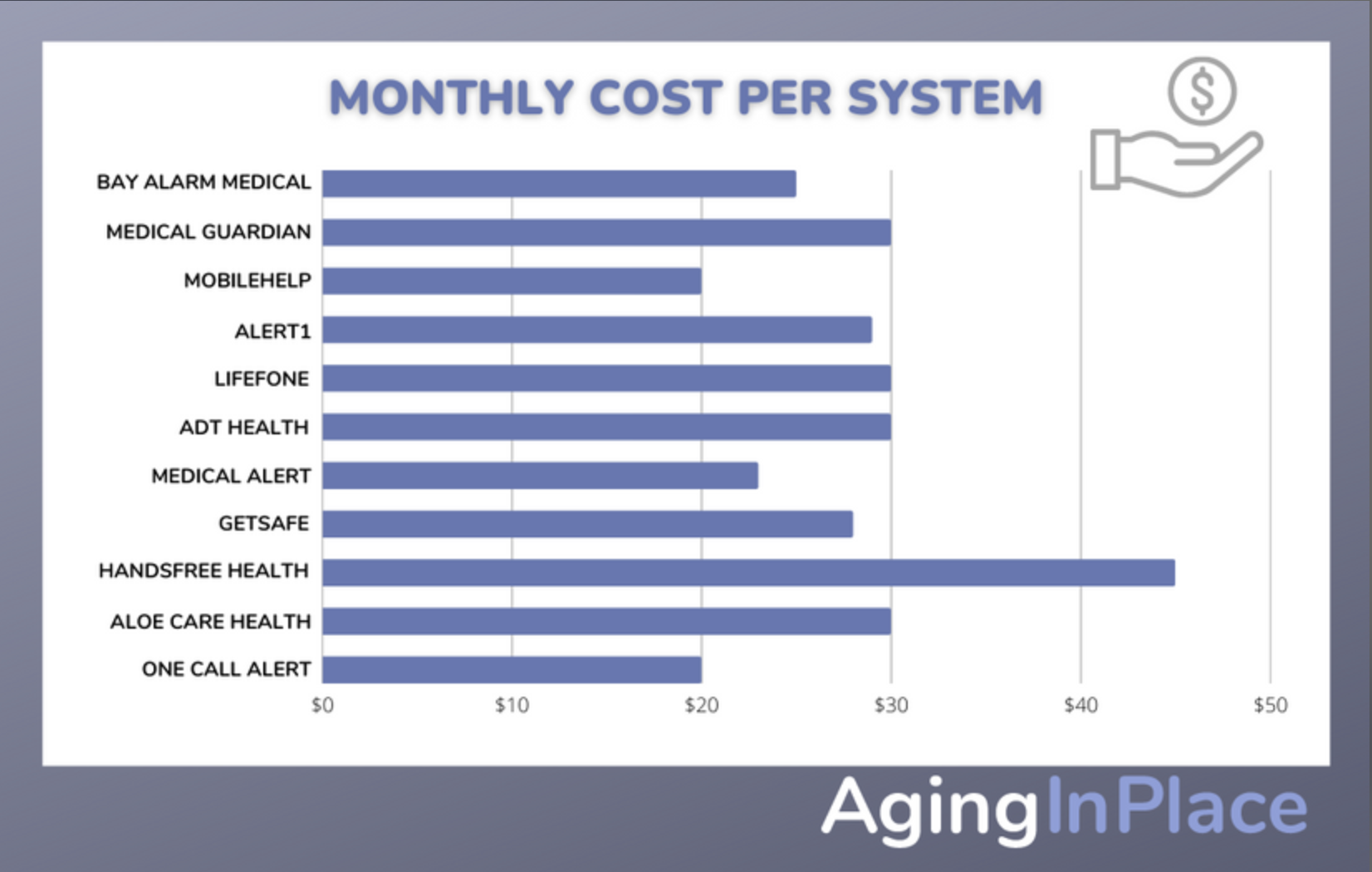
You may be able to lower your monthly monitoring fee if you choose an annual payment plan. You’ll pay for the annual subscription upfront, but you’ll save $30–$40 per year compared to if you paid month-by-month.
Not all medical alert companies offer an annual plan discount.
| Brand | Lowest Monthly Plan Cost | Lowest Annual Plan Cost |
|---|---|---|
| Medical Guardian | $29.95 per month | $27.45 per month |
| MobileHelp | $19.95 per month | $22.95 per month |
| Bay Alarm Medical | $24.95 per month | $24.95 per month |
| ADT Health | $29.99 per month | $25.99 per month |
| LifeFone | $29.95 per month | $24.95 per month |
| Aloe Care Health | $29.99 per month | N/A |
| HandsFree Health | $29.95 per month | N/A |
| Alert1 | $28.95 per month | $19.95 per month (pre-pay for first 10 months) |
| Medical Alert | $22.95 per month | $19.95 per month |
| GetSafe | $27.95 per month | N/A |
| One Call Alert | $24.95 per month | $22.95 per month |
| Brand | ||||||||||||||||||||||||||||||||||||||||||||||||||||||||||||||||||||||||||||||||||||||||||||||||||||||||||||||||||||||||||||||||||||||||||||||||||||||||||||||||||||||||||||||||||||||||||||||||||||||||||||||||||||||||||||||||||||||||||||||||||||||||||||||||||||||||||||||||||||||||||||||||||||||||||||||||||||||||||||||||||||||||||||||||||||||||||||||||||||||||||||||||||||||
| Medical Guardian | Lowest Monthly Plan Cost | $29.95 per month | Lowest Annual Plan Cost | $27.45 per month |
|---|
| MobileHelp | Lowest Monthly Plan Cost | $19.95 per month | Lowest Annual Plan Cost | $22.95 per month |
|---|
| Bay Alarm Medical | Lowest Monthly Plan Cost | $24.95 per month | Lowest Annual Plan Cost | $24.95 per month |
|---|
| ADT Health | Lowest Monthly Plan Cost | $29.99 per month | Lowest Annual Plan Cost | $25.99 per month |
|---|
| LifeFone | Lowest Monthly Plan Cost | $29.95 per month | Lowest Annual Plan Cost | $24.95 per month |
|---|
| Aloe Care Health | Lowest Monthly Plan Cost | $29.99 per month | Lowest Annual Plan Cost | N/A |
|---|
| HandsFree Health | Lowest Monthly Plan Cost | $29.95 per month | Lowest Annual Plan Cost | N/A |
|---|
| Alert1 | Lowest Monthly Plan Cost | $28.95 per month | Lowest Annual Plan Cost | $19.95 per month (pre-pay for first 10 months) |
|---|
| Medical Alert | Lowest Monthly Plan Cost | $22.95 per month | Lowest Annual Plan Cost | $19.95 per month |
|---|
| GetSafe | Lowest Monthly Plan Cost | $27.95 per month | Lowest Annual Plan Cost | N/A |
|---|
| One Call Alert | Lowest Monthly Plan Cost | $24.95 per month | Lowest Annual Plan Cost | $22.95 per month |
|---|
Upfront Fees
The monthly monitoring fee is the base cost of your medical alert system. Most companies charge activation, equipment, and/or shipping fees when you order your system.
Activation Fee: Some companies have a one-time “activation fee” or “processing fee” that may cover the purchase of the device or is an additional charge for setting up the equipment.
Equipment Fee: This is a one-time payment on top of your monthly cost. The equipment fee is charged separately if you’re purchasing the medical alert system, and it’s bundled into your monthly costs if you’re renting it. Many mobile systems and smartwatches have an equipment fee, so you’ll own the equipment even if you cancel your subscription.
Shipping Fee: Your shipping cost may be a flat rate or can be based on your location. Many companies offer free shipping with annual, semi-annual, and/or quarterly payment plans, or as an introductory offer. Shipping costs typically aren’t displayed on a company’s site until you’ve almost finished the checkout process.
| Brand | Activation Fee | Equipment Fee | Shipping Fee |
|---|---|---|---|
| Medical Guardian | $0 | $0–$199.95 | Free* |
| MobileHelp | $0–$49.95 | $0–$99.95 | Free* |
| Bay Alarm Medical | $0 | $0–$159 | Free* |
| ADT Health | $0-$29.99 | $0 | $0-$9.99 |
| LifeFone | $0 | $0 | Free* |
| Aloe Care Health | $0 | $99.99–$349.99 | Free |
| HandsFree Health | $0 | $199.95–$159.95 | $9.95-$19.90 |
| Alert1 | $0–$19.95 | $0–$179 | Free* |
| Medical Alert | $79 | $0 | Free* |
| GetSafe | $0 | $79–$279 | Calculated at checkout |
| One Call Alert | $0 | $0 | Free |
| Brand | |||||||||||||||||||||||||||||||||||||||||||||||||||||||||||||||||||||||||||||||||||||||||||||||||||||||||||||||||||||||||||||||||||||||||||||||||||||||||||||||||||||||||||||||||||||||||||||||||||||||||||||||||||||||||||||||||||||||||||||||||||||||||||||||||||
| Medical Guardian | Activation Fee | $0 | Equipment Fee | $0–$199.95 | Shipping Fee | Free* |
|---|
| MobileHelp | Activation Fee | $0–$49.95 | Equipment Fee | $0–$99.95 | Shipping Fee | Free* |
|---|
| Bay Alarm Medical | Activation Fee | $0 | Equipment Fee | $0–$159 | Shipping Fee | Free* |
|---|
| ADT Health | Activation Fee | $0-$29.99 | Equipment Fee | $0 | Shipping Fee | $0-$9.99 |
|---|
| LifeFone | Activation Fee | $0 | Equipment Fee | $0 | Shipping Fee | Free* |
|---|
| Aloe Care Health | Activation Fee | $0 | Equipment Fee | $99.99–$349.99 | Shipping Fee | Free |
|---|
| HandsFree Health | Activation Fee | $0 | Equipment Fee | $199.95–$159.95 | Shipping Fee | $9.95-$19.90 |
|---|
| Alert1 | Activation Fee | $0–$19.95 | Equipment Fee | $0–$179 | Shipping Fee | Free* |
|---|
| Medical Alert | Activation Fee | $79 | Equipment Fee | $0 | Shipping Fee | Free* |
|---|
| GetSafe | Activation Fee | $0 | Equipment Fee | $79–$279 | Shipping Fee | Calculated at checkout |
|---|
| One Call Alert | Activation Fee | $0 | Equipment Fee | $0 | Shipping Fee | Free |
|---|
*For annual, semi-annual, and/or quarterly payment plans
Cost of Additional Features
Fall detection may be an extra $5–$10 per month and is available for at-home and mobile systems. At-home fall detection is available through a specific lanyard that connects to the base station. If you opt for fall detection with your mobile system, it will be built into the device—no extra equipment is needed. Some companies include fall detection for free with certain models.
GPS tracking technology is included with most mobile systems. Some companies charge an additional $5–$9 per month or may limit the number of times you can check your loved one’s location.
Lockboxes may be available for a one-time fee ($25–$40), monthly charge ($3–$4 per month), or will be free with your subscription. A free lockbox included with your medical alert system is a frequent deal companies offer throughout the year. You may also receive a free lockbox with quarterly or annual payment plans.
Wall buttons are a common add-on accessory. They typically are $2.95–$3.95 each per month or a $30–$40 one-time payment. Push buttons are less expensive and more standard, but voice-activated buttons can cover even more range if you’re too far to push the button or aren’t wearing your help button.
Extra pendants are sometimes included for free with annual subscriptions or other special payment plans. Not all companies offer an extra pendant, but those that do usually charge about $2–$4 per month or a one-time fee of $30–$40.
Medication reminders are sometimes available for $5–$10 per month. Alert1 offers a medication reminder and organizer for a one-time payment of $149.95.
Warranties, Paid Protection Plans, and Other Policies
| Brand | Manufacturer Warranty | Additional Protection Plan | Money-Back Guarantee | “Locked” Into Your Original Price? |
|---|---|---|---|---|
| Medical Guardian | $6.99 per month | Can cancel at any time | ||
| MobileHelp | $6 per month | 30 days | ||
| Bay Alarm Medical | $2.95 – $4.95 per month | 30 days | ||
| ADT Health | Free | Can cancel at any time | ||
| LifeFone | $5 per month | 30 days | ||
| Aloe Care Health | 30 days | |||
| HandsFree Health | One year warranty | 30 days | ||
| Alert1 | $8.33 per month* | 30 days | ||
| Medical Alert | $1 per month | 30 days | ||
| GetSafe | One year warranty | $5 per month | 30 days | |
| One Call Alert | $6 per month | 30 days |
| Brand | ||||||||||||||||||||||||||||||||||||||||||||||||||||||||||||||||||||||||||||||||||||||||||||||||||||||||||||||
| Medical Guardian | Manufacturer Warranty | Additional Protection Plan | $6.99 per month | Money-Back Guarantee | Can cancel at any time | “Locked” Into Your Original Price? |
|---|
| MobileHelp | Manufacturer Warranty | Additional Protection Plan | $6 per month | Money-Back Guarantee | 30 days | “Locked” Into Your Original Price? |
|---|
| Bay Alarm Medical | Manufacturer Warranty | Additional Protection Plan | $2.95 – $4.95 per month | Money-Back Guarantee | 30 days | “Locked” Into Your Original Price? |
|---|
| ADT Health | Manufacturer Warranty | Additional Protection Plan | Free | Money-Back Guarantee | Can cancel at any time | “Locked” Into Your Original Price? |
|---|
| LifeFone | Manufacturer Warranty | Additional Protection Plan | $5 per month | Money-Back Guarantee | 30 days | “Locked” Into Your Original Price? |
|---|
| Aloe Care Health | Manufacturer Warranty | Additional Protection Plan | Money-Back Guarantee | 30 days | “Locked” Into Your Original Price? |
|---|
| HandsFree Health | Manufacturer Warranty | One year warranty | Additional Protection Plan | Money-Back Guarantee | 30 days | “Locked” Into Your Original Price? |
|---|
| Alert1 | Manufacturer Warranty | Additional Protection Plan | $8.33 per month* | Money-Back Guarantee | 30 days | “Locked” Into Your Original Price? |
|---|
| Medical Alert | Manufacturer Warranty | Additional Protection Plan | $1 per month | Money-Back Guarantee | 30 days | “Locked” Into Your Original Price? |
|---|
| GetSafe | Manufacturer Warranty | One year warranty | Additional Protection Plan | $5 per month | Money-Back Guarantee | 30 days | “Locked” Into Your Original Price? |
|---|
| One Call Alert | Manufacturer Warranty | Additional Protection Plan | $6 per month | Money-Back Guarantee | 30 days | “Locked” Into Your Original Price? |
|---|
*Alert1’s protection plan is charged as an annual, semiannual, or quarterly payment
Manufacturer warranties cover product defects due to manufacturing or mechanical issues, such as faulty parts or incorrect assembly. These warranties don’t cover the cost if you’ve damaged or lost the equipment.
Manufacturer warranties are usually included with most medical alert systems, but you’ll pay out of pocket if you damage or lose your system.
Protection plans cover your equipment from damages beyond a manufacturer’s warranty. Typical protection plans will typically replace your equipment if it’s lost, damaged, or stolen, but perks will vary from company to company. A protection plan can usually be added to your subscription for about $3–$8 per month.
Money-back guarantees are available with all medical alert systems in this review. Most companies offer a 30-day money-back guarantee, meaning you’ll get a full refund if you cancel your subscription within 30 days after receiving your equipment.
Price-lock guarantees are available with some brands to make sure your medical alert subscription payments don’t go up—even if the company increases the price. You’ll be “locked” into the original price you paid when you first bought your system.
How to Choose a Medical Alert System
Just because your neighbor or cousin recommends a certain medical alert system doesn’t mean it’s the right one for you. Whether you’re shopping for yourself or your loved one, the medical alert system should match the actual user’s lifestyle and needs. An in-person evaluation with an older adult-specialized healthcare professional can provide invaluable insight when choosing the best medical alert for you.
Most companies offer at-home and mobile equipment options that follow three standard options. Harvard Medical School breaks these options down into three levels:
- At-home base station paired with a wearable button with a short range and limited features
- At-home base station paired with a wearable button that includes fall detection and other special features
- A mobile device worn around your neck or placed in your pocket or purse that is powered by cellular technology for protection on the go
Consider the level of equipment you’d like when reviewing basic and extra features.
Max Mayblum, a Certified Senior Advisor (CSA) and the founder and CEO of Givers, stated, “Medical alert device shoppers should consider three pillars of preparedness: usability, coverage, and adherence. The device you select should be simple to operate, work in all parts of the home, and likely to actually be used by the loved one.”
With this in mind, useful features may include cellular connectivity (eliminating the need for Wi-Fi), passive monitoring (for ease of use and increased adherence), and long battery life to limit the reliance on charging.
Medical Alert System Effects on Everyday Life
AgingInPlace.org Study Data
AgingInPlace.org surveyed 1,000 medical alert system users and caregivers in 2022. We wanted to learn firsthand what leads someone to purchase a medical alert system, preferred features and improvements, and how using a medical alert system affects the user or caregiver’s daily routine.
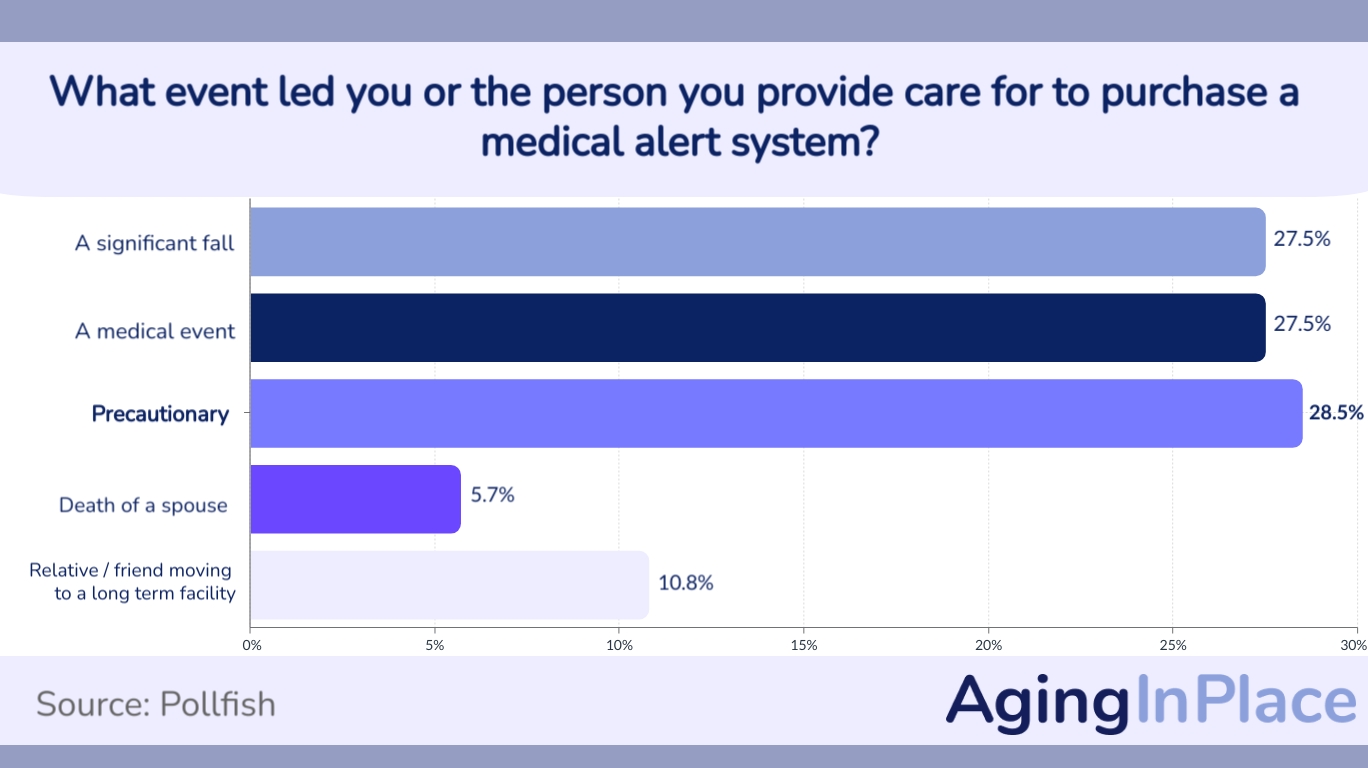
The top reason respondents purchased a medical alert system was out of precaution, but a significant fall and medical event were both the second most popular reason.

An overwhelming 90.8% of respondents felt more confident performing daily activities knowing their medical alert device will provide them with immediate assistance.
Frequently Asked Questions
-
No, most medical alert systems can be set up by you or a loved one and don’t require professional installation.
-
Yes. While AARP doesn’t endorse any specific medical alert system brand, the company highly recommends the use of one. AARP offers discounts for certain brands, including Philips Lifeline and Lively (these two companies aren’t featured in our top medical alert system list).
-
The best medical alert system varies according to your needs, preferences, and budget. Determine the essential features your medical alert system must have, as well as if you’ll need both at-home and on-the-go coverage.
-
In an 2022 AgingInPlace.org survey, 52.3% of respondents used Life Alert. After mystery shopping and researching this brand, our team decided to exclude it from our testing process and review. This exclusion is because Life Alert has too many drawbacks to earn a spot on our best medical alert systems lists. These drawbacks include:
– Poor customer service
– Lack of transparent pricing and product information on website
– Limited product offerings
– No fall detection
– Membership and three-year contract required -
Original Medicare (Medicare Parts A and B) does not cover the costs of medical alert systems. Some Medicare Advantage plans (Medicare Part C) will cover part or all of the cost. Because Medicare Advantage plans differ in each state, the best way to determine your coverage is to call your provider.
-
Most base stations have 24–32 hours of backup battery life in case of a power outage. The LifeFone VIPx has the longest battery life of a mobile system (16 days), and Bay Alarm Medical’s SOS Smartwatch has the shortest battery life (6–18 hours).
*Pricing is accurate as of December 14, 2022.
WRITTEN BY
Emily Breaux has written for multiple audiences in healthcare, higher education, tech, and more, combining her writing experience with her background in education. She currently specializes in medical alert systems content.
View AuthorMEDICALLY REVIEWED BY
Christopher is a Board-Certified Geriatric Nurse Practitioner and Holistic Nurse. As a Nurse’s Aide, Registered Nurse and now Nurse Practitioner, he has loved working with older people since 2004. He earned his Master’s Degree with Honors at Yale University, completed an Advanced Practice Nurse Fellowship in Geriatrics at New York University, and gained comprehensive experience working with people with dementia (and their families) at Upstate Medical University in Syracuse, NY.
View Reviewer- AARP | 2018 Home and Community Preferences: A National Survey of Adults Ages 18-Plus
- Merck Manual for the Professional | Family Caregiving for Older Adults
- Cision PR Newswire | Aloe Care Health Becomes the First Emergency Medical Alert System Offered on HSASTORE.COM and FSASTORE.COM
- Alzheimer's Association | Wandering
- CDC | Facts About Falls
- Harvard Health Publishing | The New Generation of Wearable Medical Alert Systems
Do you want to cite this page? Use our ready-made cite template.
